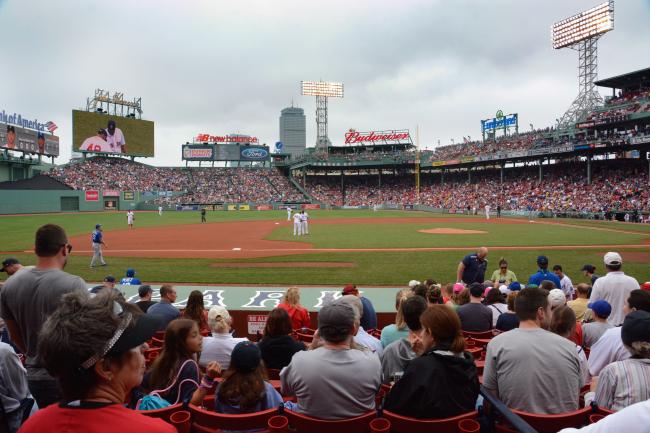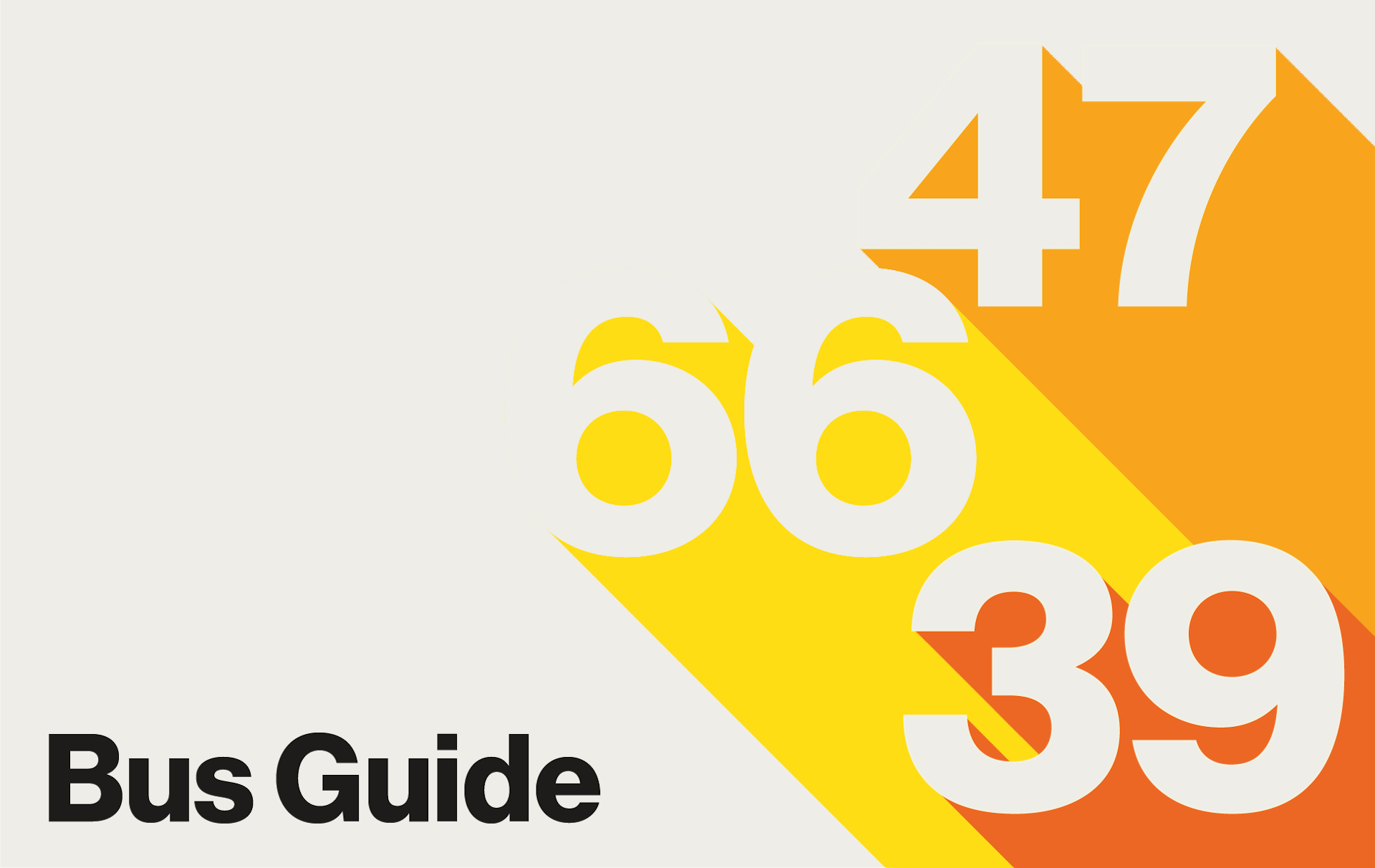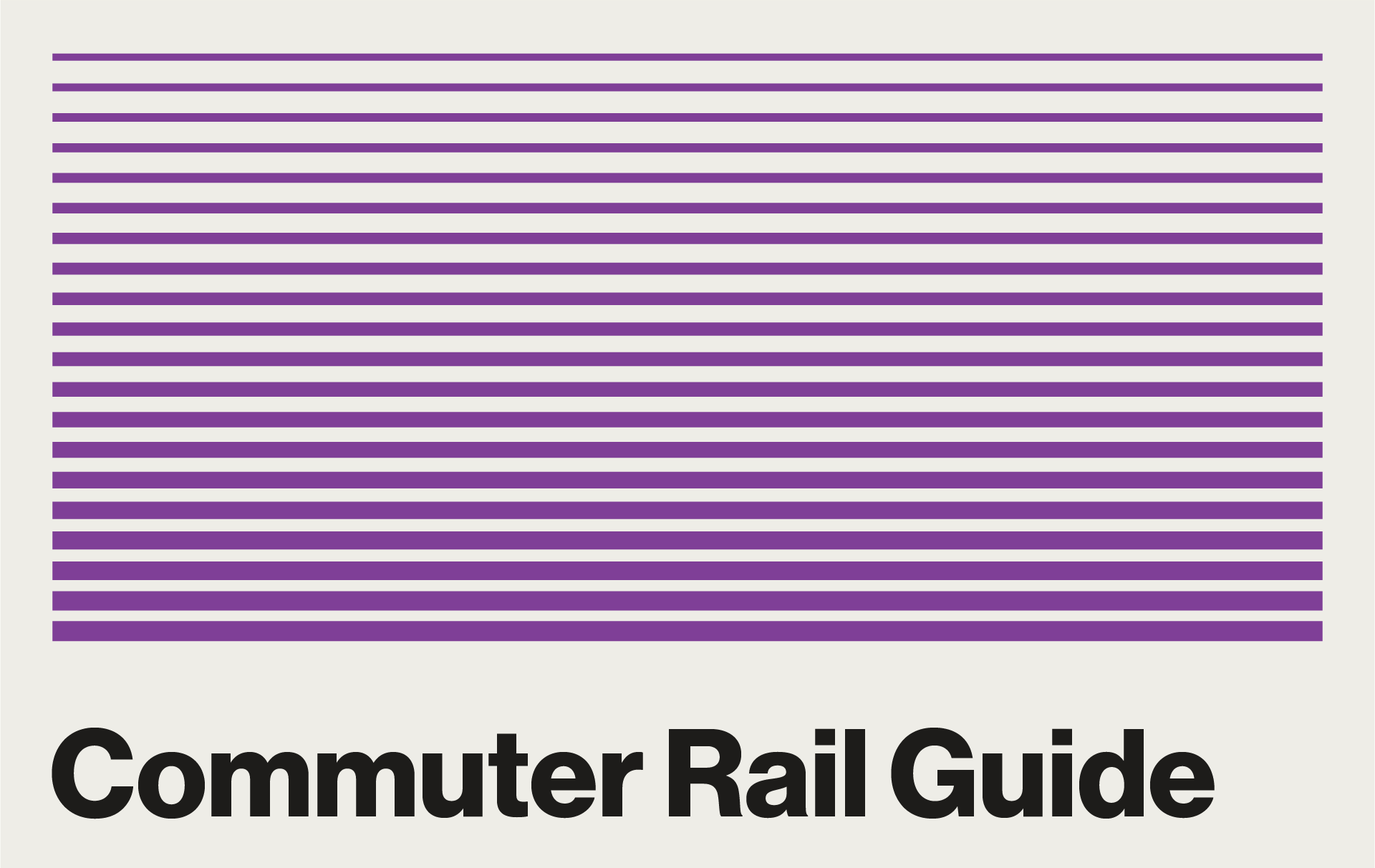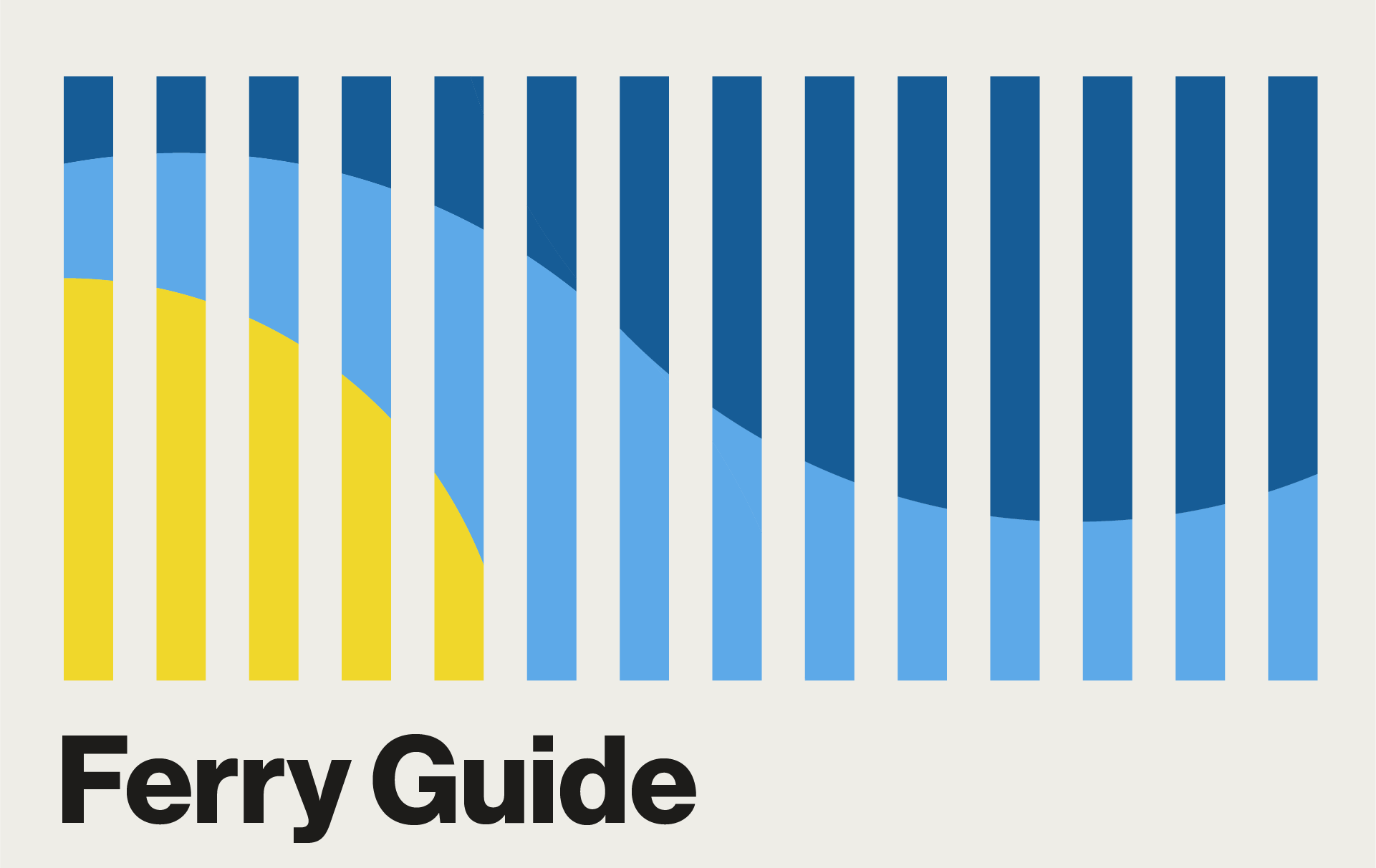Boston Visitor's Guide to the T

Whether you’re visiting Boston for the first time or you’re a seasoned pro, you may be wondering how the T can get you everywhere you want to go.
We’ve pulled together some of the most common questions about the MBTA and our tips for getting the most out of public transit in Boston.
If you have questions while you’re here, don’t hesitate to ask Customer Service agents or T Ambassadors in stations.
Getting to Know the MBTA

If you’ve never been to Boston before, you’re not familiar with the MBTA, or it’s just been a while since you’ve visited, here’s some basic information to help you get the most out of your trip.
The MBTA is the 4th-busiest public transit system in the United States and one of only 2 transit agencies in the country that operates all 5 major modes of land and water transportation.
- Local rail: 5 subway routes, including the Red, Orange, Blue, and Green lines, and the Mattapan Trolley
- Bus: 177 bus routes, including Local, Express, and Crosstown service
- Bus Rapid Transit: 5 Silver Line (SL) bus routes that sometimes travel in dedicated lanes and sometimes on public streets like regular bus routes
- Commuter Rail: Regional rail to 137 stations in the Greater Boston area and eastern Massachusetts
- Ferry: Commuter ferry service with 8 terminals connecting downtown Boston to the north and south shores of Massachusetts
- Paratransit service: The RIDE, a door-to-door shared ride service for residents and visitors with disabilities
Did you know? The MBTA subway line colors weren’t random choices! The Green Line travels through Boston’s Emerald Necklace park system; The Red Line travels to Harvard University, where the school color is crimson; the Blue Line travels along and under the ocean; and the Orange Line travels along Washington Street, formerly named Orange Street.
Hours of operation vary, but most bus and train service starts around 5 AM and ends around 1 AM.
There is no late-night or overnight train service in Boston, though some bus service starts as early (or as late!) as 3:30 AM.
Schedules vary by mode of transit and day of the week. Generally, service runs more frequently on weekdays than on weekends and off-peak hours. Subway service is the most frequent, running every 10-15 minutes most of the time.
Our trains and buses can get crowded during events, so we ask everyone to be aware of their own personal space.
We also ask riders to follow some common public transit rules:
- Always allow people to exit vehicles before you enter.
- Walk as far into the vehicle as you can so more people can board.
- Take your backpack off and hold it between your feet or at your side.
- Keep phone calls to a minimum and listen to music with headphones.
- Offer your seat to older adults and people with disabilities, especially if you’re sitting in a priority seating area.
MBTA Customer Support representatives speak Spanish, Haitian French Creole, Cape Verdean Creole, Cantonese Chinese, and Mandarin Chinese. They also have access to interpreter services in 240 languages. For assistance, call 617-222-3200.
If you’re at a station, the MBTA Transit Police and Transit Ambassadors also have access to translation services.
While we do our best to get our riders to their destinations on time, a few things can impact travel time, including weather, mechanical issues, or planned maintenance work.
All service disruptions are posted on mbta.com/alerts. Some are announced and displayed at affected transit stations.
Every MBTA staff member is trained on emergency procedures and preparedness. You may also see MBTA Transit Police officers in and around stations. They have the authority of a full police agency in Massachusetts.
If you see something suspicious or need to report an emergency, please call 911 or the Transit Police at 617-222-1212.
Choosing the Right Way to Pay

The way you pay for your trip and the type of pass you need depend on how long you’ll be in town and which modes of transit you’ll be using.
You can purchase tickets and passes for all modes, except The RIDE, at fare vending machines located at subway stations. Fare vending machines accept:
- Cash
- Credit/debit cards
- Contactless credit/debit cards
- EBT cards
For pay-as-you-go travel on bus, subway and the Mattapan Line, you can tap your contactless credit/debit card or a phone or watch with a mobile wallet.
Subway 1-way:
- $2.40 with CharlieCard, CharlieTicket, contactless payment, or cash
Local Bus 1-way:
- $1.70 with CharlieCard, CharlieTicket, contactless payment, or cash
Commuter Rail 1-way:
- $2.40 – $13.25, depending on how far you travel
For weekend travel, try our $10.00 Commuter Rail pass—valid for unlimited travel on any route on Saturday and Sunday.
Ferry 1-way:
- $2.40 – $9.75, depending on your origin and destination
Learn more about Commuter Rail fares
Tip! Children age 11 and under ride the MBTA for free. Groups including 10 or more children (regardless of the number of chaperones), must register their travel using the field trip form.
You can purchase pass and tickets in advance for group orders of $25 or more.
For bus and subway: You can purchase 1-way or round trip fares, 1- or 7-day passes, or monthly passes.
For Commuter Rail: Please contact the following according to your Commuter Rail origin station.
North Station - 617-222-3663
South Station - 617-222-8122
Orders need to be placed at least 3 – 5 business days before your trip. Advance tickets and passes are not refundable or replaceable if lost or stolen.
Note: Groups including 10 or more children (regardless of the number of chaperones), must register their travel using the field trip form. Children age 11 and under ride for free.
We have two 1-day pass options for travel in the Boston area that cost $11.00, or the equivalent of about 4 rides.
If you’re mostly traveling by subway and bus, we recommend a 1-day LinkPass for 24 hours of unlimited travel on the subway and local bus. You can also use contactless payment in any station or vehicle to pay as you go.
If you also plan on traveling by Commuter Rail or ferry, you can buy a 1-day Commuter Rail Zone 1A pass on a CharlieTicket for travel on subway, Local Bus, Commuter Rail Zone 1A and the Charlestown and East Boston ferries.
If you’re here for the weekend and plan to take the Commuter Rail, we recommend the $10.00 weekend pass, valid for unlimited travel on any route on Saturday and Sunday.
We have two 7-day pass options for travel in the Boston area that are $22.50, or the equivalent of about 9 rides.
If you’re mostly traveling by subway and bus, we recommend a 7-day LinkPass on a CharlieCard for 1 week of unlimited travel on the subway and Local Bus.
Learn more about 7-day LinkPasses
If you also plan on traveling by Commuter Rail or ferry, you can buy a Commuter Rail Zone 1A pass on a CharlieTicket for travel on subway, Local Bus, Commuter Rail Zone 1A and the Charlestown and East Boston ferries.
If you’re mostly traveling by subway and bus, and:
- You don’t plan to take the T very often, we recommend loading cash onto a CharlieTicket so you can pay as you go.
- You plan to use the T almost every day, we recommend a monthly LinkPass, valid for 1 calendar month of unlimited travel on the subway and Local Bus. Monthly LinkPasses are $90.00—that’s equal to the cost of about 37 subway trips.
Learn more about monthly LinkPasses
If you’re mostly traveling by Commuter Rail or ferry, and:
- You’ll only use the T once in a while, we recommend buying 1-way, round trip, or 10-trip tickets as you need them at fare vending machines or with the mTicket app. Please note that tickets purchased on mTicket are not valid for travel on the subway or bus.
- You plan to use the T almost every day, we recommend buying a monthly Commuter Rail or ferry pass at fare vending machines or with the mTicket app. Printed monthly passes for these modes are also valid on the bus and subway, but mTicket passes are only valid on the mode for which they are purchased.
Fare Calculator
Choose your origin and destination to calculate your fare with our Trip Planner.
Arriving in Boston

Whether you’re traveling to Boston by car, train, bus, or plane, you can use the T for the final leg of your journey.
There are 2 Amtrak terminals in Boston, at South Station and North Station. South Station is also the main terminal for intercity bus lines like Greyhound and Megabus. Amtrak also stops at Back Bay Station.
South Station, located in the heart of downtown Boston, is a Red Line, Silver Line, and MBTA bus station. It’s also a Commuter Rail terminal, serving all routes that travel south of Boston.
Learn more about South Station
North Station, located near the North End and directly underneath TD Garden, is a Green Line, Orange Line, and MBTA bus station. It’s also a Commuter Rail terminal, serving all routes heading north of Boston.
Learn more about North Station
Note: There is no direct link between North and South Station. From South Station, take the Red Line to Park Street and transfer to the Green Line to North Station, or reverse it to go in the other direction.
Back Bay Station is located in, you guessed it, Boston’s Back Bay neighborhood, near Copley Square. It’s an Orange Line and MBTA bus station, as well as a Commuter Rail stop for some routes that go to South Station.
The SL1 bus and Massport Shuttle from Logan Airport are both free.
The SL1 picks up and drops off at every terminal and connects to the Red Line at South Station. Transfers to the Red Line at South Station are free.
The Massport Shuttle picks up and drops off at every terminal and connects to the Blue Line at Airport Station. You’ll pay a normal subway fare to ride.
Boston traffic is notoriously hectic, and parking can be limited and expensive. Privately owned garages can cost as much as $40 for a few hours.
At MBTA lots and garages located at Commuter Rail and subway stations, you’ll pay just $5 for an entire day of parking. From there, you can hop on the train for a traffic-free commute into Boston. Some locations allow overnight parking, so you can leave your car there for your whole trip.
Visiting Attractions

People visit Boston for a lot of reasons—a baseball game, a work conference, or to experience history up close (sometimes all 3 in one trip)!
Here are some of the most popular destinations—if you’re trying to get somewhere that’s not on the list, try our trip planner.
The best way to get to and from Fenway Park is to take the Green Line. It gets very crowded on game days, so we recommend leaving earlier than you think you need to. If you get lost, just follow the people wearing jerseys.
There are 4 Green Line branches, but only the B, C, and D lines stop at Fenway and Kenmore. If you accidentally get on the E line, switch to another line at Copley.
Both stations are near the stadium, but Kenmore is closer.
Did you know? Fenway Park shares its name with The Fenway, a short parkway that runs through the same neighborhood. Both the stadium and the parkway get their name from the marshy wetlands nearby, the Back Bay Fens.
If you’re not staying near a Green Line station, you can connect to it from:
The Boston Common and Public Garden are both central to Downtown Boston, within walking distance of Beacon Hill, the State House, Government Center, Chinatown, and Back Bay. It’s also where the Freedom Trail starts.
There are 2 subway stations in the Common:
Park Street Station, at the corner of Park and Tremont Streets, serves all Green Line branches and the Red Line. A number of buses stop on Tremont Street outside the station as well. In the station, there are fare vending machines and customer service agents who can help you find your way to nearby attractions or transit connections.
Boylston Station, at the corner of Tremont and Boylston Streets, serves all Green Line branches. There is also a Silver Line stop at street level. Please note the subway entrance is not accessible to people with disabilities.
Did you know? Boylston and Park Street stations opened in 1897, and are the oldest underground transit stations in America still in operation today. Stop by the Boylston inbound platform to see 2 antique streetcars: a PCC #3295 from the 1950s, and a Type-5 #5734, built in 1924.
Other nearby stations include:
Faneuil Hall Marketplace, located near Boston’s historic wharfs and the North End, has been a market and meeting place since the 18th century. It’s one of the most famous stops along the Freedom Trail, often called the Cradle of Liberty. Today, you’ll find a number of restaurants and retail shops there.
There are no MBTA stations in Faneuil Hall, but several are within walking distance:
The North End is one of the oldest residential neighborhoods in Boston. It’s a great place to grab a classic Italian dinner and a fresh cannoli. While you’re there, you can stop by Paul Revere’s House or the historic Old North Church.
There aren’t any subway stations in the North End, but it’s just a quick walk from Haymarket or North Station, which are stops on the Orange and Green Lines. North Station is also a Commuter Rail stop.
Did you know? The North End is the northernmost section of the city’s original land settlement, the Shawmut Peninsula. Until the early 19th century, the only way to get to the mainland was to cross the Boston Neck, a 120-ft wide strip of land that connected the peninsula to modern-day Roxbury.
The Freedom Trail starts in the Boston Common, right between 2 subway stations: Park Street and Boylston Street. It heads north, toward the North End, and then across the Charles River to the Bunker Hill Monument and USS Constitution.
You can take a walking tour of the entire trail, or you can take the T to the spots you’re most interested in.
The trail passes by the following MBTA stations:
- Park Street
- State Street
- Government Center
- Haymarket
- North Station
- Charlestown Navy Yard on the Inner Harbor Ferry
Did you know? Near the State House, the Freedom Trail meets up with the Black Heritage Trail, which winds through Beacon Hill and marks points of significance in African American history, including the African Meeting House and the Abiel Smith School.
Fenway Park

Headed to Fenway for a Red Sox game or concert? The T can get you there—and help you avoid traffic.
Accessibility and Reduced Fares

Most of the MBTA is accessible to people with disabilities.
If you are 65 or older or a person with a disability, you may be eligible for reduced fares or paratransit service, even if you’re just here for a few days.
We also offer trip planning assistance to help you get the most out of your visit to Boston.
All MBTA buses are accessible to people with disabilities, and most, but not all, subway and Commuter Rail stations are accessible. Ferries and docks are as well, but there may be some barriers to access depending on high or low tides.
Visitors who are blind or have low vision are eligible to ride all MBTA services for free.
Learn more about the Blind Access CharlieCard
Visitors with disabilities that prevent them from using bus, subway, or trolley service may be eligible for paratransit service through The RIDE.
People 65 and older may be eligible for reduced Commuter Rail fares with a valid, state-issued ID.
Learn more about the Senior CharlieCard
If you are enrolled in a reduced fare program, you can link your benefits to your form of contactless payment.
We can help you plan an accessible trip! Call our Customer Support team at 617-222-3200, or 617-222-5146 (TTY).
Learn more about planning an accessible MBTA trip by visiting our access guides for the subway, bus, Commuter Rail, and ferry.
Fare Calculator
Choose your origin and destination to calculate your fare with our Trip Planner.
Fenway Park

Headed to Fenway for a Red Sox game or concert? The T can get you there—and help you avoid traffic.




